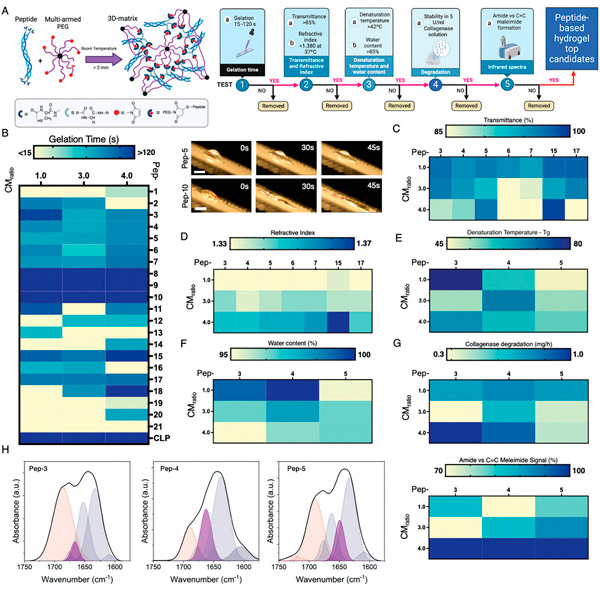New publications
Peptide-based hydrogel shows promise for tissue and organ repair
Last reviewed: 02.07.2025

All iLive content is medically reviewed or fact checked to ensure as much factual accuracy as possible.
We have strict sourcing guidelines and only link to reputable media sites, academic research institutions and, whenever possible, medically peer reviewed studies. Note that the numbers in parentheses ([1], [2], etc.) are clickable links to these studies.
If you feel that any of our content is inaccurate, out-of-date, or otherwise questionable, please select it and press Ctrl + Enter.

By combining biomedical precision and nature-inspired engineering, a team of scientists led by the University of Ottawa has created a gel-like material that shows enormous potential for rapidly repairing a wide range of damaged organs and tissues in the human body.
Cutting-edge research led by University of Ottawa Faculty of Medicine Associate Professor Dr. Emilio I. Alarcon could impact the lives of millions of people in the future with peptide hydrogels that can seal skin wounds, deliver therapeutics to damaged heart muscle and repair damaged corneas.
“We use peptides to create therapeutic solutions. The team takes inspiration from nature to develop simple solutions for wound closure and tissue repair,” says Dr. Alarcon, a scientist and director of the BioEngineering and Therapeutic Solutions (BEaTS) group at the University of Ottawa Heart Institute, whose pioneering research focuses on developing new materials with tissue regeneration capabilities.
Peptides are molecules found in living organisms, and hydrogels are a water-based material with a gel-like texture that has proven useful for therapeutic purposes.
The approach used in the study, published in Advanced Functional Materials and co-led by Dr. Erik Suuronen and Dr. Mark Ruel, is unique. Most hydrogels studied in tissue engineering are animal-derived and protein-based, but the biomaterial created by the joint team is enhanced with engineered peptides. This makes it more applicable to clinical practice.
Dr. Ruel, a professor in the Department of Cellular and Molecular Medicine at the University of Ottawa's Faculty of Medicine and chair of research in the Division of Cardiac Surgery at the University of Ottawa Heart Institute, believes the findings of the study could be revolutionary.
“Despite millennia of evolution, the human response to wound healing remains imperfect,” says Dr. Ruel. “We see abnormal scarring from skin incisions to eye injuries to heart repair after a heart attack. Drs. Alarcón, Suuronen, and the rest of our team have been focused on this problem for nearly two decades. Dr. Alarcón’s paper in Advanced Functional Materials represents a new way to make wound healing, organ healing, and even basic scarring after surgery much more therapeutically manageable and therefore optimized for human health.”

Synthesized peptides for instant soft tissue repair. Advanced Functional Materials (2024). DOI: 10.1002/adfm.202402564
Indeed, the key is the ability to modulate the peptide biomaterial. The University of Ottawa team’s hydrogels are designed to be customizable, making the tough material adaptable for use in a wide range of tissues. Essentially, the two-component recipe can be tweaked to increase adhesiveness or decrease other components, depending on the body part requiring repair.
“We were very surprised by the range of applications that our materials can achieve,” says Dr. Alarcon. “Our technology offers an integrated solution that is customized depending on the target tissue.”
Dr. Alarcon also notes that these studies suggest that the therapeutic effects of biomimetic hydrogels are highly effective and that their use is significantly simpler and more cost-effective than other approaches to regeneration.
The materials were developed at low cost and in a scalable format, which is a critical quality for many large-scale biomedical applications. The team also developed a rapid screening system that significantly reduced development costs and testing times.
“This significant reduction in cost and time not only makes our material more economically viable, but also accelerates its potential for clinical use,” says Dr. Alarcon.
What are the next steps for the research team? They will conduct large animal trials in preparation for human testing. So far, heart and skin trials have been conducted in rodents, and the cornea work has been done ex vivo.
